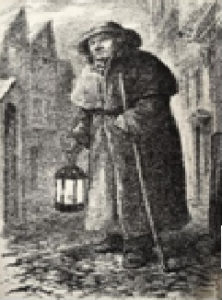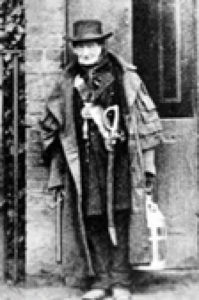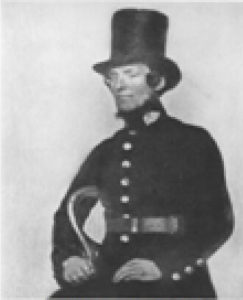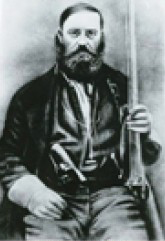History of PolicingFrom Voluntary to Professional Early Watchman Professional law enforcement, involving preventative patrol, assistance to citizens and the prevention or apprehension of criminals, is generally accepted to have begun in England with the adoption of the Metropolitan Police Act of 1829. Prior to that time, many cities had a system of "watchmen" or personnel who looked mainly for fire, but raised the alarm if they found something suspicious. This was supposed to be a voluntary duty shared with each male member of the designated area taking a turn. This was somewhat problematic in that many did not want to give up a night to stand "watch" so they hired someone to take their place. This could be anyone who would do the job, and history has indicated it was often someone who was considered unskilled or even the town drunk. Each watchman had some type of lantern, a noisemaker (horn, whistle, rattle, or gong) to raise an alarm and probably a club or staff for protection, or to assist someone out of a creek or puddle.  Charlie Rouse, 1850 Some became professional watchmen and made a living collecting from those not wishing to serve or, in some cases, from the municipality itself. Some of these watchman, such as Charlie Rouse in London, continued their duties even after the establishment of the Police Act. Rouse is generally depicted carrying a rattle, a sword, and in some images, a large flintlock handgun. Watchmen had no arrest power as the authority to arrest was generally delegated to local town magistrates and their appointees. Thieves Caught the ThievesThese magistrates often used criminals to pursue other criminals, thus the title of "Thief Catcher" and while not officially armed, it was considered acceptable for them to protect themselves. Knives, clubs or swords were the preferred as the firearms of the time were single shot, bulky by today's standards, and subject to malfunction in inclement weather. While firearms were carried by some magistrate's deputies, a knife or short sword was considered both quicker and more effective at close range. The apprehension of dangerous or armed criminals, once they were located, was generally delegated to the military. Apprehension of armed criminals was recognized as a dangerous occupation even in the early 1800's. | Sir Robert Peel Constable, 1829 Known as 'Peelers' When the Metropolitan Police were first established in London, 1829, the newly formed Constables were known as "Peelers" after the author of the Police Act, Sir Robert Peel. They were distinctively uniformed with top hat and tunic, armed with a rattle, whistle, truncheon, and a short sword. London Police were and still are, not issued personal firearms for daily use, although there were and still are, armed squads in the English police forces. Most available firearms were single shot, smooth bore, flint or later percussion. They had to be loaded with powder, a projectile, and primed before firing. A good marksman could get off 3 shots a minute or one every 20 seconds – provided he was not distracted by someone attacking or maybe shooting at him. The firearms of the time were, for the most part, large and built to be used as a club once discharged. Knives still have uses in police work and swords are still issued today by some police agencies, but they are primarily for parades or ceremonial uses as firearms have become the weapon of choice. First Armed Officers in the U.S. Joseph Meek US Marshall 1849 Oregon Territory In the early years of the colonies, which would later become the United States of America, similar situations existed. Watchmen patrolled the cities to sound the alarm in case of fire. Magistrates, Judges, Sheriffs, or Town marshals, were appointed by the controlling faction of the town. Early constables in the cities were armed only with a truncheon or club and a whistle to summon aid. When clubs were ineffective firearms were issued and used as needed to meet the threats. Firearms continued to evolve and improve in accuracy and effectiveness. Shoulder fired weapons led the way and many early American law enforcers were often pictured with either a shotgun or a rifle, as distance was considered a friend if you had to reload. Baltimore Police Department claims to be the first to arm all police officers, using the 1849 colt percussion revolver. As US Border Patrol Officer Bill Jordon wrote in his memoirs (1959); "There is no second-place winner in an armed confrontation." |

